evaluation
Evaluation of Refractory Installation and Vibration Systems
Data was collected from fourteen foundries using the RIVS to line furnaces of 2 tons or larger capacities, melting grey, ductile iron or copper. Thirteen lined furnaces with silica, one foundry melted copper and lined with alumina-based refractory. Consistent and sustained improvements in operation and health and safety conditions were shown by all foundries using the advanced technology. All participants were using the full system. A summary of the principal results and benefits is detailed below.
- Air Samples for Respirable Silica – produced results between 10 µg/m³ and 50 µg/m³ when lining with the RIVS; at or below OSHA’s (Occupational Safety and Health Administration) permissible exposure levels of 50 µg/m³
- Densities of linings – every foundry added more material than when manually lining a furnace, producing a denser lining. Only 5 of 11 foundries measured the densities of manually installed and RIVS installed linings. The densities of the conventionally produced linings ranged between 124 and 130 pounds/cu. ft. while those produced by the RIVS measured the maximum for silica between 137 and 139 pounds/cu.ft.
- Longer lining life was achieved in every foundry surveyed. Foundries reported that furnaces lined manually (with silica) lasted between 3.5 and 5.5 weeks, whereas RIVS lined furnaces lasted on average 2 weeks longer. In one foundry lining life increased 100 percent (from 3.5 to 7 weeks) and at another 143 percent improvement above manually lined furnaces. The 30-ton furnace lined with alumina-based refractory lasted 50 percent longer than when lined conventionally. The extremely high increases related to poorer manual lining procedures. The 4-ton and two, 2-ton furnaces reported an average of 23% longer lining life.
- Workforce Reduction – Two workers operate the RIVS system regardless of the size of the furnace. Foundries surveyed manually lined furnaces using between 4 and 12 workers, depending on the size of the furnaces. The RIVS reduced that number to two, for a reduction ranging between 57 and 83%. Hours of labour to line a furnace decreased an average of 62% and overall elapsed time decreased by approximately 37%.
- Tonnage Throughput – All foundries reported a higher tonnage throughput per campaign simply because linings lasted longer. Increases ranged between 28 and 67 percent longer than when furnaces were conventionally lined.
- Fewer Annual Linings – Foundries with furnaces larger than 9-tons reported an average 42% fewer linings annually using the system. The foundries with 2-ton and 4-ton furnaces reported 50% reduction. Considering the cost of tear-out, relining and sintering each furnace, return on investment was significant in some foundries. Return on investment also was impacted by the number of furnaces in use; the greater the number, the better the return.
